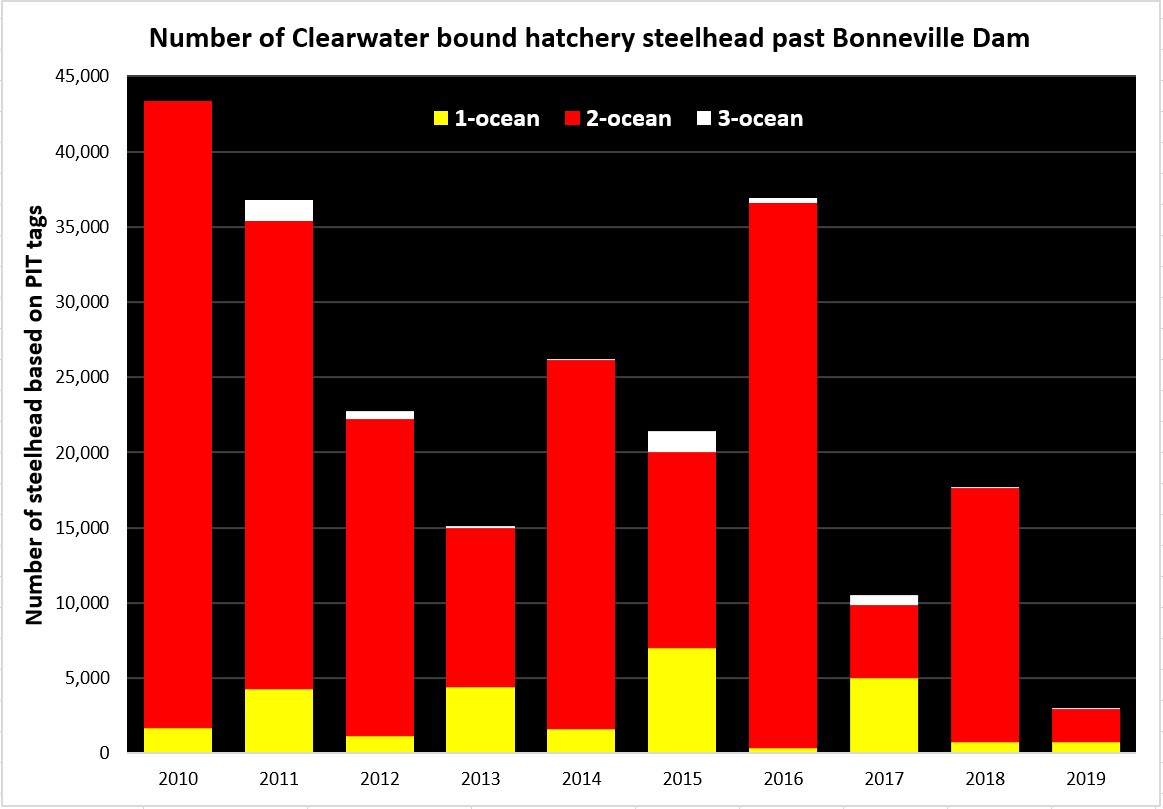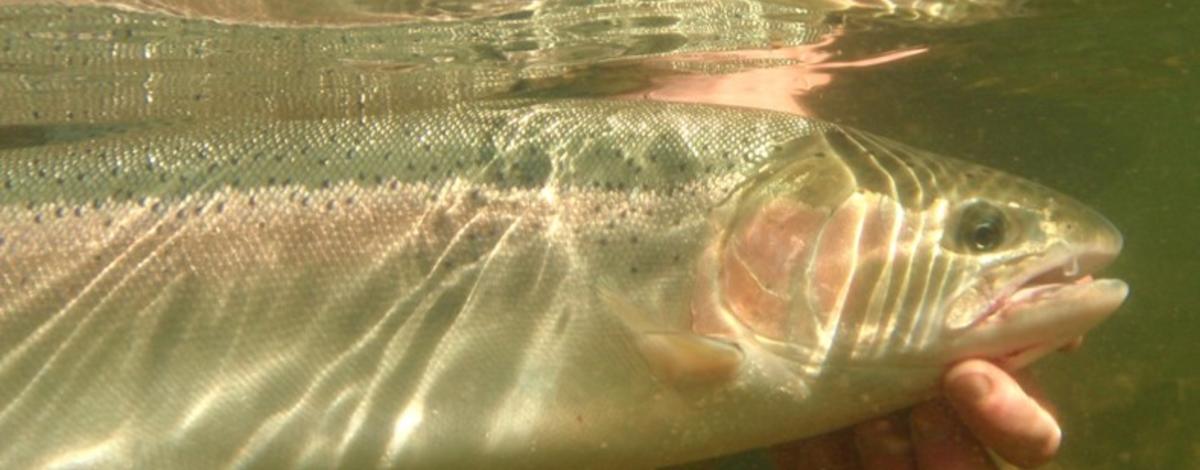Hi everybody. By now, I’m sure most of you have heard that our commission decided to close the steelhead fishery in the Clearwater River basin due to the poor return of hatchery fish destined for this watershed. For more information on the commission’s decision, you can click on this link commission closes steelhead fishery.
The reason I am writing this blog is I want to give you a better feel for what the Clearwater River hatchery return is looking like and the type of information the commission used when making their difficult decision. The first data I want to share with you is displayed in the figure below. This figure shows the number of Clearwater River hatchery bound steelhead that have passed over Bonneville Dam on an annual basis since 2010. It also shows what portion of the return each year spent one, two, or three years in the ocean before they returned back to fresh water as adults. The 2019 data is what we are forecasting will ultimately pass over Bonneville Dam this year. We are fairly confident with this estimate, as by now (September 23) the Clearwater’s hatchery steelhead return over Bonneville Dam is typically about 70% complete. When I first looked at this data, it was fairly shocking at just how small this year’s return is projected to be in comparison to the previous nine years. For reference, in 2013 and 2017 we had to implement size restrictions (none under 28 inches) to ensure we would make brood needs at our Clearwater hatcheries.

As you can see from the figure above, the majority of hatchery steelhead that return to the Clearwater River basin tend to spend two years in the ocean (2-ocean fish) and typically weigh 10-14 pounds. These larger sized fish are one of the reasons this river is so popular with anglers. To help ensure we maintain this size structure, we try to spawn only the larger 2-ocean and 3-ocean steelhead. This year, we are projecting that around 1,700 of these larger steelhead will make it back to the Clearwater. To fill our hatcheries we typically need to spawn around 1,350 fish. The problem is that less than half of these fish are destined for Dworshak Hatchery where most of the brood stock is trapped. More than half of these fish are destined for the South Fork Clearwater River where the only way we have been able to collect them for brood in the past is through our angler caught brood program. This information suggests we will not meet our brood stock needs for this run. This is the information that weighed heavily on the commission as they made the decision to shut down this fishery. They felt that maintaining the long-term stability of this program was the number one priority. For those of you are wondering whether we are going to make efforts to collect brood stock from the South Fork Clearwater River, the answer is yes. We are already having discussions with the Nez Perce Tribe on strategies we can use to increase the number of brood collected from this river.
One additional data set I want to share with you is displayed in the figure below. This figure shows the number of steelhead that have passed over the most upriver Snake River dam (downstream of the WA/ID border) since 1962. This data set starts in 1962 because that is when Ice Harbor Dam was completed on the lower Snake River and we were able to first start counting the number of fish that were destined for Idaho. What I want to point out in this data set is how returns have been cyclic over time. Notice the extremely low returns we observed in the mid to late 1970's and then we experienced low returns (especially for wild fish) again about 20 years later in the mid to late 1990's. Now, about 20 years later, we are once again experiencing down returns. Many believe the major driving force behind this cycling abundance is caused from changing ocean conditions. Yes, there are other things that have been responsible for large changes in steelhead returns (hydropower, harvest, habitat, and hatcheries), but I believe this cyclic pattern we are seeing is best explained by changing ocean conditions. The reason I bring this up is because if you consider the past, this downturn was not that unexpected (it falls right into the 20 year cycle). Also, if history holds true, this downturn will last 5-6 years (we are probably in year 3) and then returns will rebound back again. So don’t lose hope as history tells us that good times are not too far away.

One interesting bit of information we are seeing this year (2019-2020 run year) that I want to share with you is the number of wild steelhead returning in relation to hatchery returns. Since the mid 1980’s wild steelhead have made up on average 17% of the fish returning to Idaho. This year, about 50% of the steelhead returning to Idaho are wild. We haven’t seen something like this since the early 1980’s when our hatchery programs were fairly new. I’m not sure what caused this and I’m not sure what this means, but I thought I would share it with you because it is unusual and hopefully we can learn from it. I do need to point out that even though our wild steelhead run to Idaho is down this year, it is projected to be larger than we have seen the previous three years. Let’s hope this is a signal that larger returns are just around the corner.

